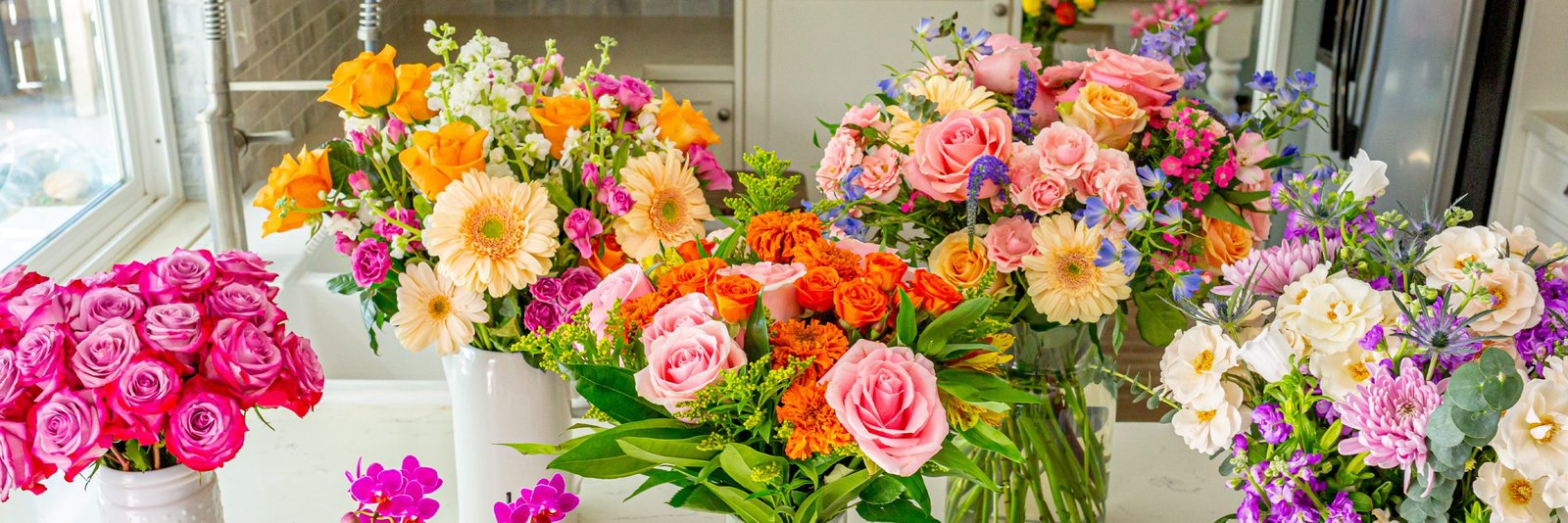Top 10 Most Popular Flowers and Their Meanings
- Home
- Top 10 Most Popular Flowers and Their Meanings

Flowers have been used for centuries to express emotions, celebrate occasions, and convey messages without words. Each bloom carries a story and symbolism that goes beyond its fragrance and beauty. Whether you’re choosing a bouquet for someone special or decorating your space, understanding the meaning behind each flower can add depth and intention to your gesture. Let’s explore the top 10 most popular flowers and uncover the meanings they hold.
The rose is perhaps the most iconic flower in the world and is universally known as the flower of love. However, its meaning varies by color:
Red Rose: True love and passion
White Rose: Purity, innocence, and remembrance
Yellow Rose: Friendship and joy
Pink Rose: Gratitude, admiration, and sweetness
Roses are ideal for romantic occasions, anniversaries, weddings, and even expressions of sympathy depending on the hue.
Tulips symbolize deep and perfect love. Originating from Persia and Turkey, they bloom in early spring and are often associated with renewal and fresh beginnings.
Red Tulip: True love
Purple Tulip: Royalty
Yellow Tulip: Cheerful thoughts
White Tulip: Forgiveness
Their simple elegance makes them popular in home gardens, weddings, and springtime celebrations.
Lilies are graceful flowers often seen at both joyful and somber events. Their meaning largely depends on type and color:
White Lily: Purity and virtue (common at funerals)
Stargazer Lily: Ambition and prosperity
Pink Lily: Admiration and compassion
Calla Lily: Beauty and faith
Lilies are often used to celebrate life milestones like births, weddings, and also in remembrance.
Orchids are exotic flowers known for their delicate yet resilient nature. They symbolize rare and delicate beauty, strength, and refinement.
Pink Orchid: Grace, joy, and femininity
White Orchid: Elegance and innocence
Purple Orchid: Admiration and royalty
Blue Orchid: Uniqueness and spirituality
Perfect for gifting someone you admire, respect, or wish to impress.
Sunflowers are radiant blooms that always turn toward the sun, symbolizing optimism and unwavering loyalty.
Meaning: Warmth, joy, longevity, and adoration
Often associated with summer, sunflowers are wonderful for boosting moods and conveying encouragement and positivity.
Carnations are often underrated but are deeply symbolic and long-lasting.
Red Carnation: Love and admiration
White Carnation: Pure love and good luck
Pink Carnation: A mother’s undying love
Purple Carnation: Capriciousness
These are perfect for Mother’s Day, graduations, and formal ceremonies.
Daisies are simple yet cheerful flowers that represent innocence and purity.
White Daisy: New beginnings and simplicity
Gerbera Daisy: Cheerfulness and positive energy (especially in vibrant colors)
Often used in baby showers and spring bouquets, daisies radiate happiness.
Peonies are lush, full blooms associated with romance and prosperity. In Eastern cultures, they are considered omens of good fortune and a happy marriage.
Pink Peony: Love and femininity
White Peony: Bashfulness and apology
Red Peony: Wealth and honor
These flowers are often chosen for weddings, anniversaries, and formal events.
Known for its calming fragrance, lavender also holds symbolic meaning.
Meaning: Grace, peace, purity, and devotion
Lavender is commonly used in aromatherapy and as a decorative element for spaces meant for relaxation and healing.
Chrysanthemums are popular in both Eastern and Western cultures but have different meanings depending on location.
Red Chrysanthemum: Love
White Chrysanthemum: Truth and loyalty
Yellow Chrysanthemum: Neglected love (in some cultures), happiness in others
In Asia, chrysanthemums symbolize life and rebirth, while in Europe they are often associated with sympathy.
Flowers do more than just beautify a room or bouquet—they communicate emotions, sentiments, and intentions that words sometimes fail to express. Whether you’re sending a bouquet to celebrate a birthday, console a grieving friend, or confess your love, understanding the symbolic language of flowers ensures your gesture is both thoughtful and meaningful.
So, the next time you pick a flower or receive one, take a moment to consider what it’s saying—it might be speaking volumes without ever making a sound.